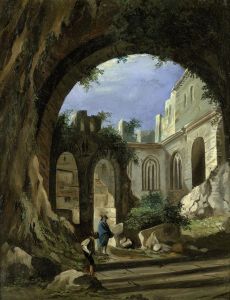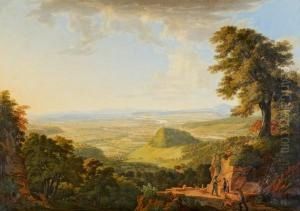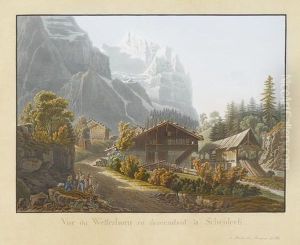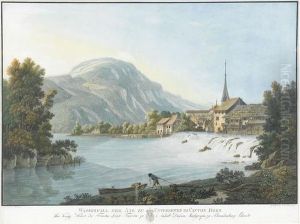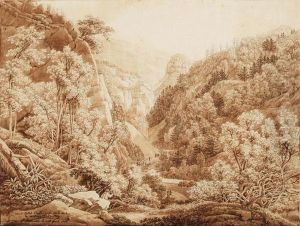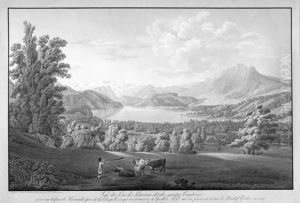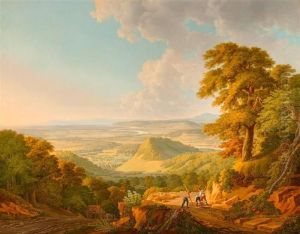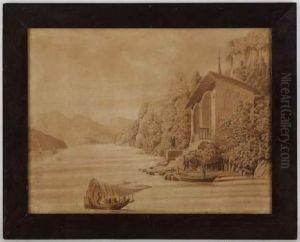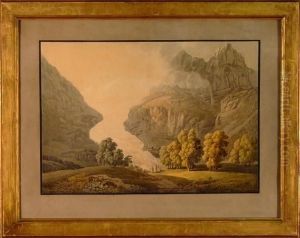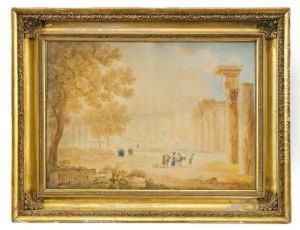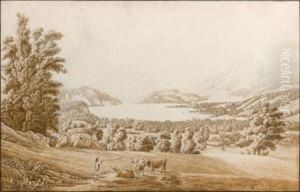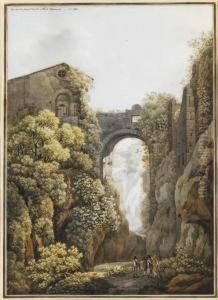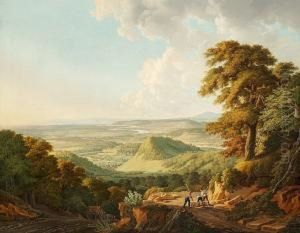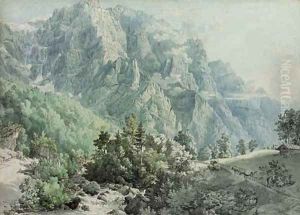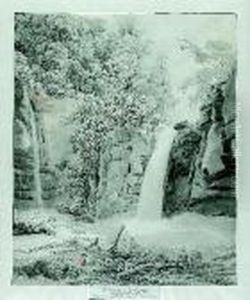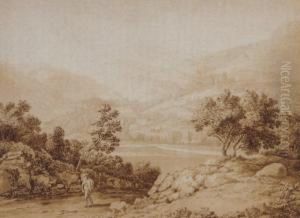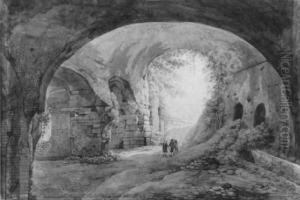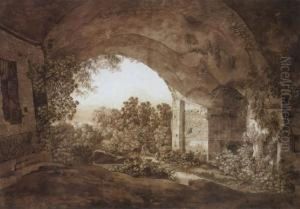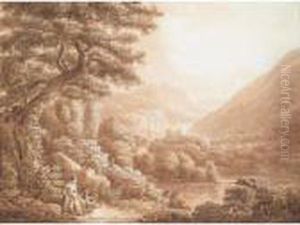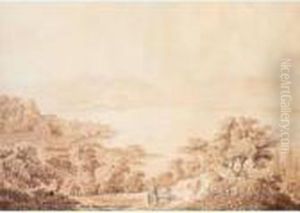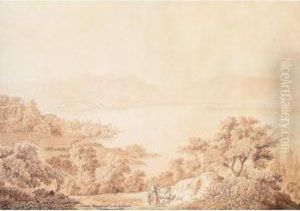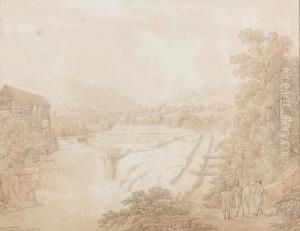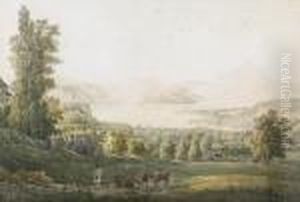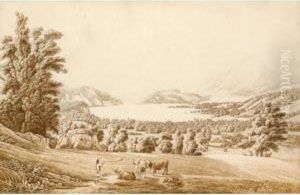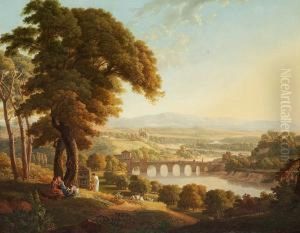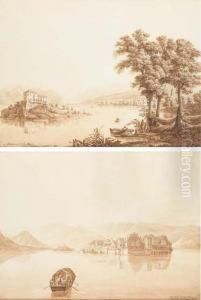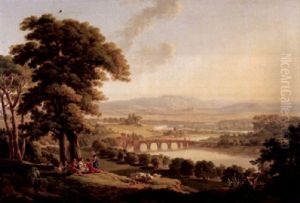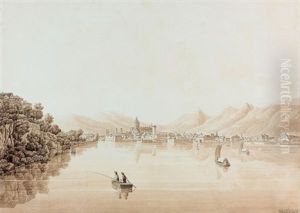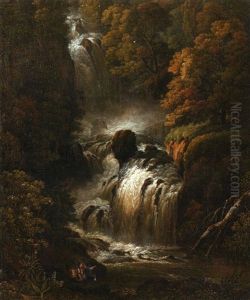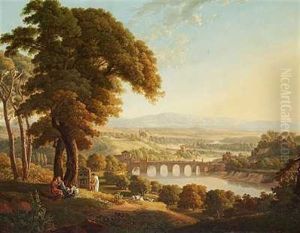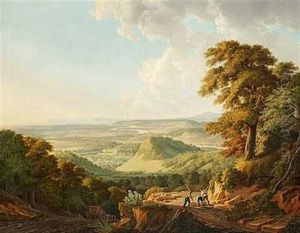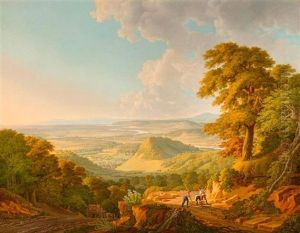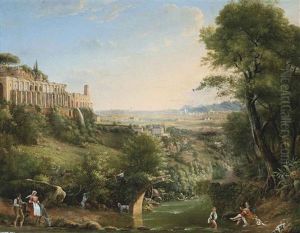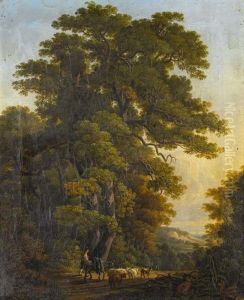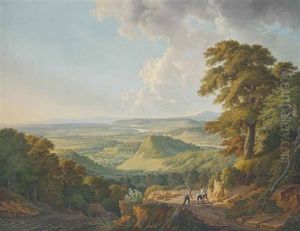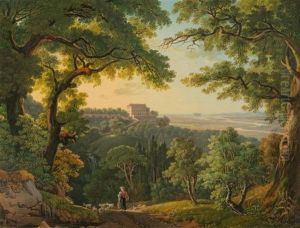Peter Birmann Paintings
Peter Birmann was a Swiss painter and etcher born on July 4, 1758, in Basel, Switzerland. He was part of the generation of landscape painters who contributed to the development of Swiss landscape art in the late 18th and early 19th centuries. Birmann initially trained as a bookseller, but his passion for art led him to pursue a career in painting. He was largely self-taught, although he did receive some instruction from landscape painter Samuel Hieronymus Grimm, who was living in Basel at the time.
Peter Birmann is best known for his captivating landscapes, which often depicted the Swiss Alps and surrounding areas with a remarkable degree of realism and attention to detail. He was influenced by the works of other artists such as Caspar Wolf, another prominent Swiss landscape painter of the time. Birmann's work was characterized by its precision and the use of light to create atmospheric effects. He often ventured outdoors to paint en plein air, a practice that was becoming increasingly popular among landscape artists and allowed them to capture the natural world with greater authenticity.
Throughout his career, Birmann traveled extensively within Switzerland, and his landscapes serve as a valuable historical record of the Swiss countryside during this period. In addition to his paintings, he also produced a significant number of etchings and drawings, which were well-received and contributed to his reputation as a skilled artist.
Despite his contributions to Swiss art, Birmann was not widely known outside of Switzerland during his lifetime. However, his work has since gained recognition, and he is now regarded as an important figure in the history of Swiss painting. His works can be found in various Swiss museums and are appreciated for their beauty and historical value.
Peter Birmann continued to work and inspire other artists until his death on May 12, 1844, in Basel. His legacy lives on, and he is remembered for his dedication to capturing the essence of the Swiss landscape and contributing to the country's artistic heritage.


